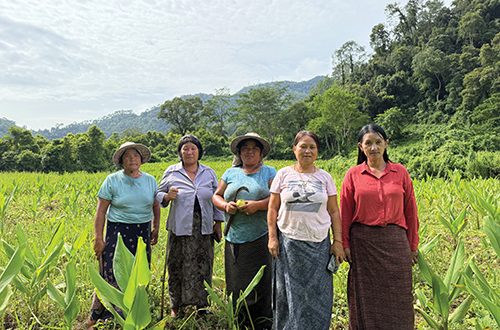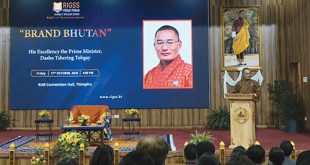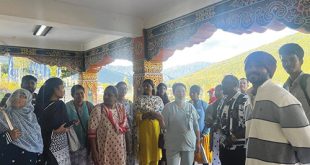Last year, the group supplied its largest consignment yet, 1,000 kg of dried turmeric marking steady growth in production
In the quiet village of Tama, perched on the rugged hills of Zhemgang, eight farmers (seven women and one man) are rewriting their community’s story with the golden root of turmeric.
What began as a failed experiment with cardamom nearly a decade ago has today blossomed into a thriving, organic turmeric enterprise that is changing lives, building confidence, and bringing national recognition to a small village once known for its struggles.
The journey was anything but easy.
When Bhutan Association of Women Entrepreneurs (BAOWE) first formed 15 farmers’ groups in Zhemgang in 2013, Tama’s members, mostly uneducated housewives and elderly farmers, chose cardamom. But harsh conditions and poor yields forced many to abandon the initiative.
Of the original 20 members, only eight remained in the group. In 2017, with renewed determination and support from BAOWE, they shifted to turmeric, a crop more suited to the land and market demands.
“Our first turmeric crop was ready after a year, but then the pandemic hit,” recalls Tshering Lhadon, the group’s chairperson and the only member with a formal education up to grade 10. “The harvest had to wait until 2021, yet we refused to give up.”
That perseverance paid off. In 2018, before the first harvest, BAOWE had already facilitated a contract with the Institute of Traditional Medicine Services (ITMS) in Thimphu, commonly known as traditional hospital. The agreement guaranteed an annual supply of dried turmeric, which the hospital uses for traditional medicines.
Since then, production has steadily grown from 600 kg in the first year to 700 kg, then 800 kg, and finally reaching 1,000 kg of dried turmeric last year. For every kilogram of dried product, they earn Nu 250.
Beyond ITMS, surplus turmeric is ground into fine powder, sold in 100-gram packets for Nu 40 each, or occasionally sold raw in local markets for Nu 20–30 per kilogram.
The group cultivates turmeric on seven acres of leased land from Zhung Dratsang, certified organic by Bhutan Food and Drug Authority (BFDA). Members range in age from 45-year-old housewife Choki Zangmo, who proudly says she now contributes income to her family of six children, to 72-year-old Choki Dorji, the group’s only male member, who works alongside his wife, Nukumo.
Their days are not easy. Members walk 20–30 minutes through thick bushes and uphill paths just to reach the farm. Harvesting is grueling as turmeric roots must be washed, peeled by hand often leaving cuts on their fingers and carefully dried. If the monsoon brings heavy rains, the risk of fungus spoiling the crop looms large. For such a small group, producing 1,000 kg is indeed a remarkable feat.
“Turmeric was something our ancestors used for dyeing and medicine, but it was forgotten over time,” says Karma Choden, one of the members. “Now we are not only reviving its use but also creating opportunities for our children to continue.”
In fact, children often join their parents during winter breaks, helping with peeling and drying, and learning the value of perseverance. The group also produces smaller quantities of organic ginger and cardamom.
What sets the Tama turmeric group apart is not just their harvest, but their solidarity and transparency. Plans are underway to open a joint account, but members say they already share every financial detail openly. “Trust is our biggest strength,” says Choden, who hosts the group’s powder-making machine in her home.
Dema Lhazom, a single mother of 7 children is also a member of the group. She is grateful to BAOWE for providing her the opportunity to learn and earn for family at the same time. Along her eldest daughter who supports the family financially, she is glad and thankful she can contribute too and share the economic burden.
BAOWE has played a critical role in their journey from providing seeds, equipment, and training in proposal writing and market networking, to guiding them in product development and post-harvest processing.
Their story is already creating ripples. It reflects a broader shift in Zhemgang, where farmers are moving from maize and cereals vulnerable to wildlife damage and poor markets to cash crops like turmeric, cardamom, and mandarins. It also shows how CSOs like BAOWE can empower rural women, foster entrepreneurship, and drive inclusive development in some of Bhutan’s most marginalized communities.
For these seven farmers in Tama, turmeric has become more than a crop. It is a symbol of resilience, unity, and the belief that with determination and the right support, even the smallest group can create a golden change.
This article is supported by Bhutan Media Foundation and Helvetas Bhutan, with funding from European Union.
 The Bhutanese Leading the way.
The Bhutanese Leading the way.




